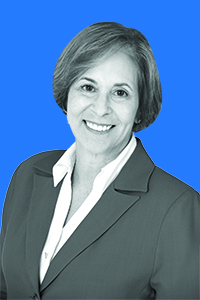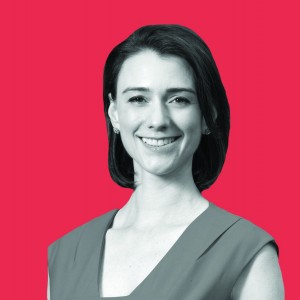Trending
FiDi doubles down on retail: Q&A, part III

From the December issue: Westfield’s World Trade Center complex may have gotten off to a wobbly start, but Lower Manhattan’s retail scene appears to finally be finding its footing. Brookfield Place’s $250 million revamp brought in luxury retailers like Hermes and Burberry, as well as a food hall that quickly became a favorite of local families. Westfield World Trade Center is now fully leased, according to a spokesperson, and Pier 17’s new 300,000-square-foot retail space is slated to open next year. Meanwhile, the area’s demographics have changed — decades of residential conversions and the recent wave of construction have established a critical mass of younger, well-to-do residents. The population has doubled since 2000, and a third of families in the area earn $200,000 or more, according to the New York State Comptroller. And financial services, once the district’s defining industry, now accounts for only 34 percent of total jobs in the area, compared to 56 percent in 2000. With that new demographic in mind, Whole Foods is set to open a new store at One Wall Street in 2018. “It’s a big deal,” said Susan Kurland, executive vice president and co-head of global retail services at Savills Studley. And it’s not just families and office workers who are driving the retail scene — the district has seen a huge influx of tourists, with the WTC memorial bringing 14 million visitors to the area annually. The greater diversity Downtown has extended the shopping day, broadened demand, and created a unique retail mix distinct from Soho or Tribeca, according to industry observers. “FiDi stands on its own,” said Lee Block, executive vice president at Winick Realty Group. “It has its own daytime workforce population, its own residential population, and retail coming in to serve that population.”
For our third and final web installment, we turn to Susan Kurland of Savills Studley, David C. Berkey of L&L, and Jessica Lappin of Alliance for Downtown New York.

Susan Kurland
Susan Kurland
Executive vice president and co-head of global retail services, Savills Studley [TRDataCustom]
Between Westfield and Brookfield Place, should there be concerns about the luxury retail market becoming oversaturated? How has the downturn in the financial industry affected foot traffic and sales?
Downtown Manhattan gets an inordinate amount of traffic. I don’t Think Feet On The Street is a problem at all. I also don’t think there is too much luxury. I don’t think people will specifically go down there, but if they are living there, why would they need to go up Madison Avenue or 57th Street to shop? It’s a matter of convenience.
How does the retail district differ from other Downtown areas like Tribeca and Soho?
Soho is a lot a lot of brands. Every brand you can think of is there. Tribeca is getting more retail tenants, but I don’t personally consider Tribeca, with its quiet demeanor, to be a shopping environment.
In June, the City Council approved plans to rezone the pedestrian arcades at the base of Buildings On Water Street to permit enclosed retail venues. What kind of retail do you see coming there?
Water Street can be successful, except in the cold months. The wind off the water makes it colder around there, which makes me not 100 percent convinced about it. Part of The Reason That The World Trade Center And Brookfield Place will be successful is because of the convergence of all these buildings underground. In the cold weather, you don’t have to go outside.
David C. Berkey
Executive vice president, L&L Holding Company
L&L owns two buildings in FiDi. What incentives, if any, are you offering brokers or tenants to fill out the retail?
In our two buildings [195 Broadway and 222 Broadway], we have not had to do anything in terms of incentives and have gotten rents well over $500 per square foot. We recently finished a nearly 10-year project bringing retail space to the landmarked lobby of 195 Broadway and secured leases with Nobu and Anthropologie years in advance of the project’s completion. If you have great space in a great location, incentives are not necessary.
Do you think there’s enough demand to fill the WTC mall — and how long will it take?
Every retail project the world over needs time to get the mix of tenants right, but at the end of the day, the one thing every successful shopping center must have is pedestrian traffic, and Westfield has no shortage of that. I have no doubt that in time it will prove to be another feather in the cap of Lower Manhattan.
How has the arrival of Condé Nast changed the character of FiDi and its retail makeup?
Condé has always been a trendsetter in terms of where they have had their corporate offices. Their being at the forefront of culture and good taste is built into their corporate DNA.
What are some of the most surprising trends you’ve observed in the retail scene?
While it’s not at all surprising, the impact of the Internet has been by far the biggest challenge faced by traditional retailers. It takes something special to get people out of their living rooms, and food is a major component of that.

Jessica Lappin
Jessica Lappin
President, Alliance for Downtown New York
How does the retail district differ from other Downtown areas like Tribeca and Soho?
Something that sets us apart is our unique mix of historic and modern spaces. We have restaurants and shops in buildings like the Beekman’s Temple Court and the Woolworth Building, but also in The Wtc And Brookfield Place.
As you’ve noted before, the area still lacks sufficient basic retail amenities like supermarkets. What are the challenges for bringing in new retail?
That’s changing, and it’s changing fast. Currently, there are seven supermarkets, seven gourmet markets, including Le District and Eataly, and six Greenmarkets. The addition of the Whole Foods at One Wall Street and Dean and DeLuca at 40 Wall Street will only add to that. In October, Tribeca welcomed Target’s first flexible-format store in Manhattan, at 255 Greenwich Street — a move that was made in large part to serve the number of families in the area. In terms of challenges, we have narrow streets — some are cobblestone — which can be hard for stores that need truck deliveries. Landlords and tenants have to be creative to deal with tougher logistics than you would have in the suburbs.
Do you think there’s enough demand to fill the WTC mall?
Lease volatility at the beginning of any shopping complex is not uncommon, and having access from 13 subway lines, the PATH trains and ferry terminals via Fulton Center is a huge locational advantage that currently draws 300,000 travelers each day.
What kind of retail do you see coming to the recently rezoned pedestrian arcades on Water Street, and how long will it take for it to become a lively retail corridor?
The retail opportunities included in the zoning are geared toward small businesses, typically 6,000 square feet or less. We want community-oriented retail that will add character and value for those who live and work here, especially on nights and weekends. This won’t happen overnight. But over time, it will incentivize landlords to make significant investments in the public plazas and to their buildings.
What do you see driving the huge increase in retail rents?
The potential of the market — we’ve had huge residential and workforce growth over the past few years. The neighborhood is well on its way to becoming a regional shopping destination. Recently, we’ve seen Zara expand their space, and Urban Outfitters has committed to bringing in its sister store, Anthropologie. We have a low storefront vacancy, and we attribute that in part to landlords who understand how to properly set rents and adapt their spaces to accommodate the needs of stores and restaurants.
How has the arrival of Condé Nast changed the character of FiDi and its retail makeup?
Condé Nast is just one of a number of new companies that have migrated Downtown. Over the past several years, we’ve seen a diversification in jobs with a noticeable jump in creative and tech opportunities — the number of TAMI companies stands at over 800 today — including publishing titans like Time Inc. and HarperCollins, new web forces like Vox Media, Refinery 29 and the XO Group, media and technology agencies GroupM and Mediamath, and advertising firm Droga5. Hudson’s Bay Company, Gucci, Hugo Boss and Revlon lead the pack of new companies specializing in fashion and beauty. These newcomers are bringing more buying power with new tastes and retail habits.




